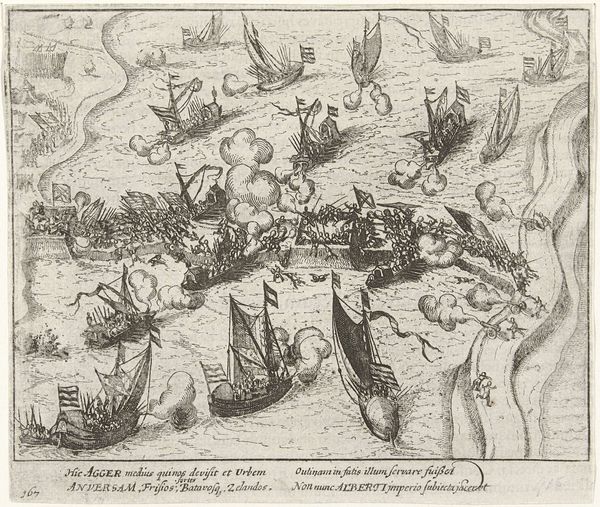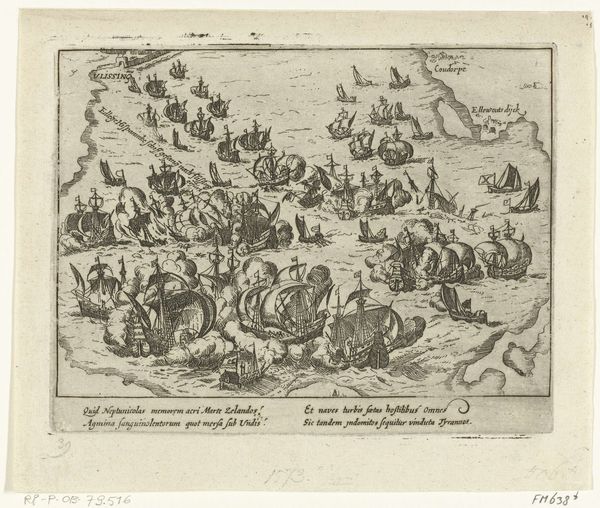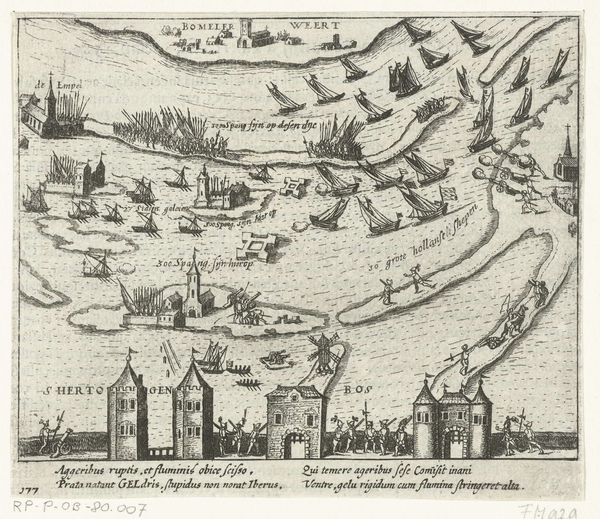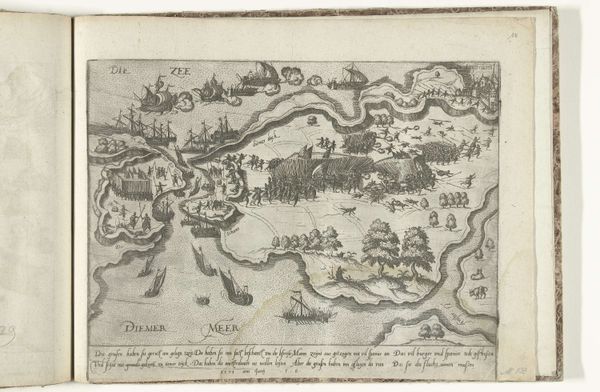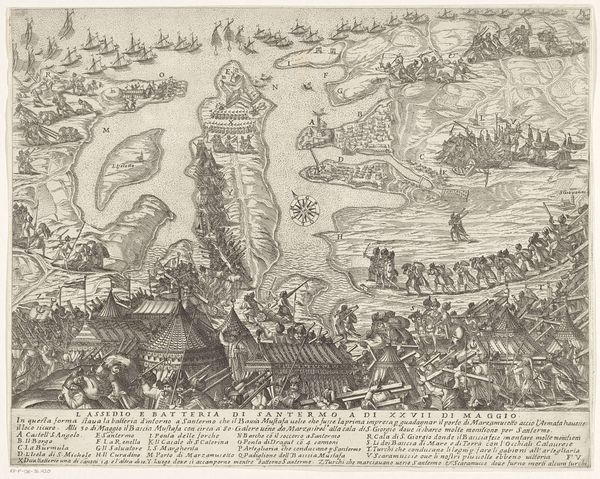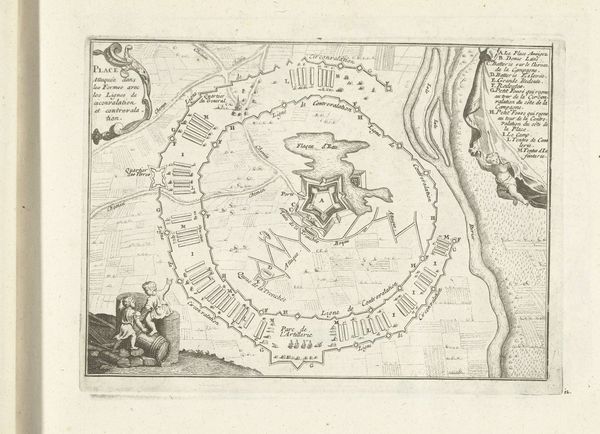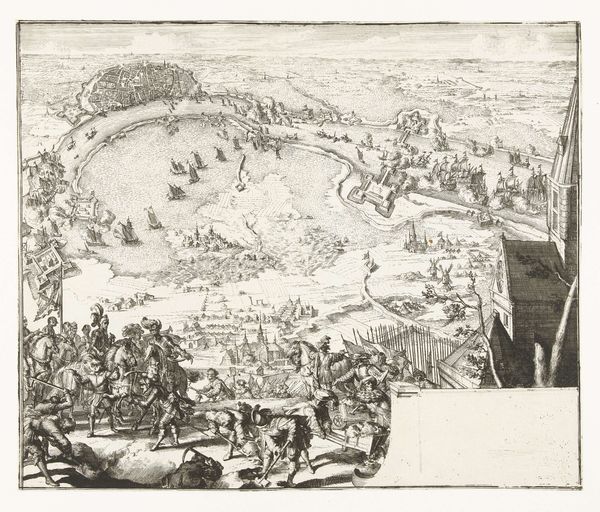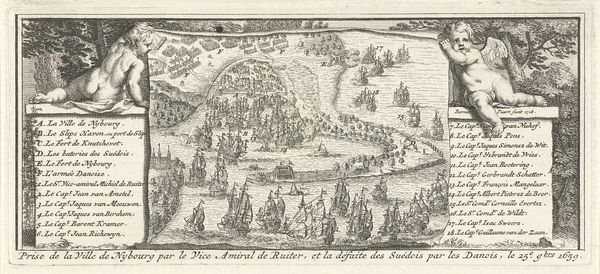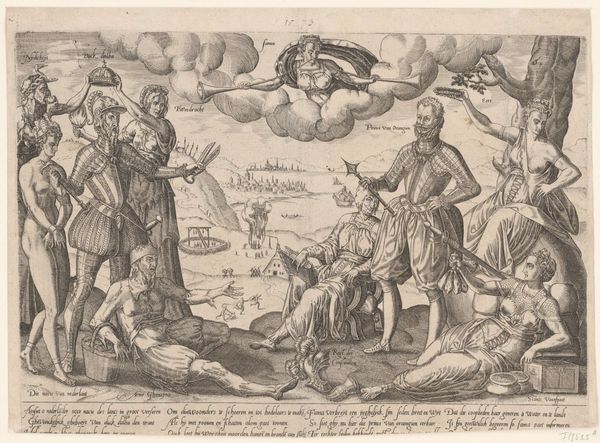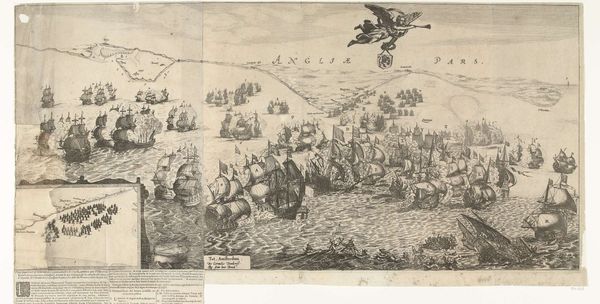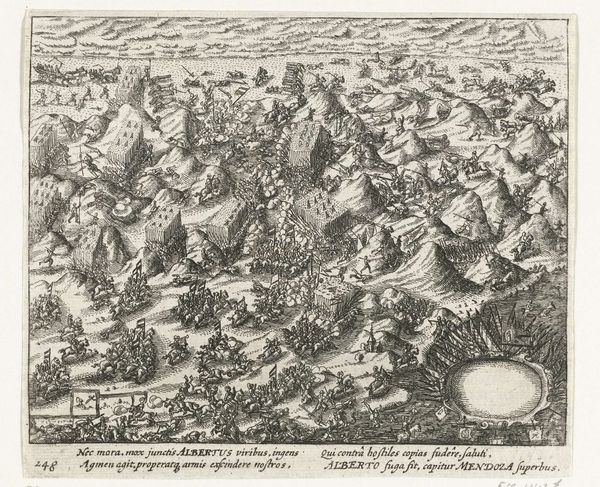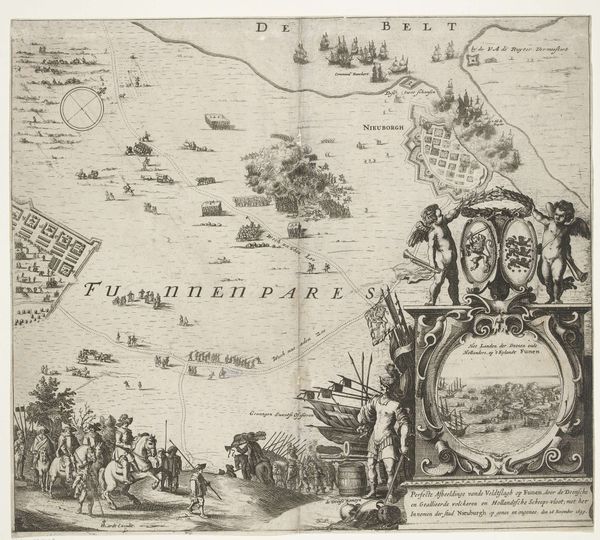
Copyright: CC0 1.0
Editor: This is "Entrée du Prince de Pfalzbourg" by Jacques Callot. It's quite detailed, almost like a play unfolding. I’m struck by how Callot captures procession and performance. What’s your take on this piece? Curator: It's a fascinating piece reflecting the political theater of the era. Consider the context: early 17th century, a time when public displays of power were crucial. How does this print function as a form of propaganda? Editor: Propaganda? It seems almost celebratory, not necessarily manipulative. Curator: Well, think about the artist’s role. He's not just documenting; he's constructing an image of power, reinforcing the Prince's authority through spectacle and allegorical figures. What effect would this have on public perception? Editor: I see your point. It's more than just documentation; it's crafting a specific narrative. Thanks! Curator: Exactly! It reveals the inherent social function of art, shaping public opinion and cementing power structures.
Comments
No comments
Be the first to comment and join the conversation on the ultimate creative platform.
